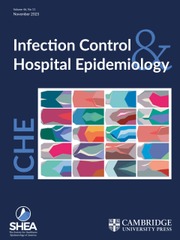No CrossRef data available.
Article contents
Summary of the International Workshop: New Agents Causing Nosocomial Infections
Published online by Cambridge University Press: 02 January 2015
Extract
Dr. Phillips introduced his discussion about resistant staphylococci with the statement that nosocomial Staphylococcus aureus infections have steadily declined in England over the past two decades. The peak of infections with multiply antibiotic-resistant S. aureus strains was in the early 1960s. Toward the end of the 1960s, penicillin-resistance decreased and methicillin-resistance increased. Generally, resistant strains were found less frequently in the 1970s. No major outbreaks of cross-infection were seen in the United Kingdom since 1977 although Staphylococcus aureus did emerge from time to time, for example, in the recent epidemic of toxic shock syndrome, previously known to clinicians as staphylococcal scarlatina. In contrast, Staphylococcus epidermidis is in ascendency. In the early 1960s this organism was occasionally seen in stitch abscesses but then it appeared with increasing frequency in urinary tract infections and infections associated with intravascular devices. Dr. Phillips summarized his presentation with the statement that Staphylococcus aureus has lost its will to spread and, probably, to become resistant. Despite extreme provocations by medical procedures, only sporadic episodes of emergence seem to occur. Staphylococcus epidermidis, on the other hand, never had the will to spread but is more able to develop resistance. This organism is an example of the classic opportunist who receives a lot of help (from plastics!). During the discussion, several questions about staphylococcal taxonomy and methods of antimicrobial susceptibility testing were raised. Reference was made to the situation of staphylococcal infections in other countries; for example, the cyclic appearance of methicillin-resistant Staphylococcus aureus in the US.
Information
- Type
- Original Articles
- Information
- Copyright
- Copyright © The Society for Healthcare Epidemiology of America 1984

